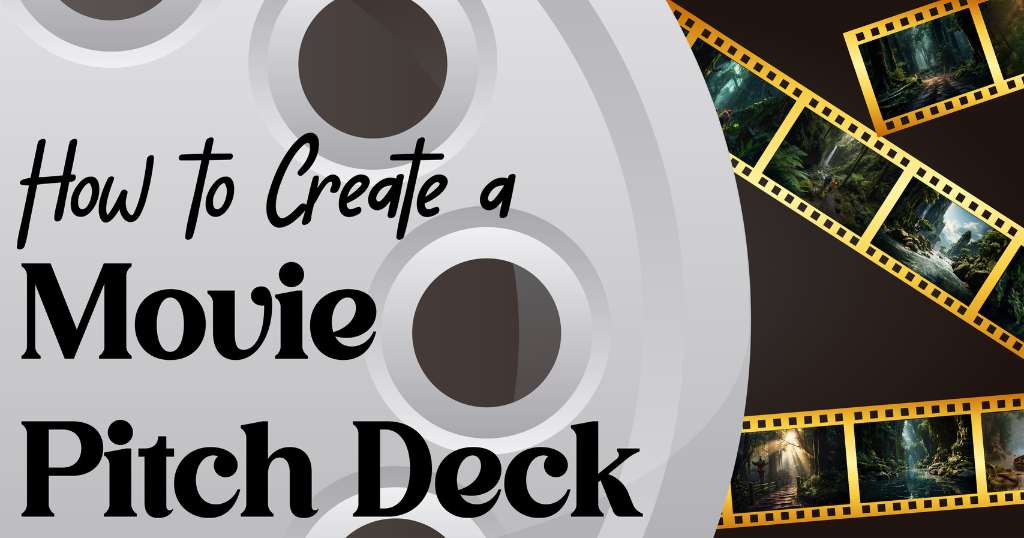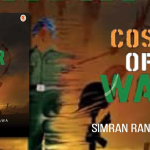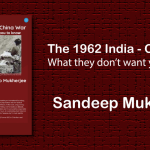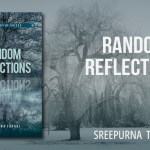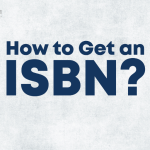In the dynamic world of filmmaking, where ideas are the currency of creativity, adapting books into movies has become an increasingly popular trend. This intersection of literature and cinema allows filmmakers to tap into captivating narratives, well-developed characters, and established fan bases. However, the journey from a beloved book to a compelling movie requires careful navigation. One essential tool in this process is the movie pitch deck, a comprehensive document that captures the essence of the book and communicates its cinematic potential. In this blog post, we will unravel the art of creating a movie pitch deck for books, providing aspiring filmmakers and producers with a roadmap to transform literary treasures into cinematic gems.
Understanding the book
Before delving into the intricacies of creating a movie pitch deck, it is crucial to thoroughly understand the source material—the book. Whether it’s a classic novel or a contemporary bestseller, the nuances of the narrative, character arcs, and thematic elements must be grasped. Take note of the tone, atmosphere, and unique elements that make the book special. This deep understanding will be the cornerstone of your pitch deck, guiding every decision throughout the adaptation process.
Identifying cinematic potential
Not every book is automatically suited for the big screen. A critical aspect of crafting a successful movie pitch deck is identifying the cinematic potential within the source material. Consider the visual elements that can be translated effectively: compelling settings, vivid characters, and dramatic plot points. Evaluate the book’s storytelling structure and determine if it lends itself well to a cinematic narrative. This assessment will guide your pitch deck towards highlighting the aspects that make the story inherently cinematic.
Structuring the Movie Pitch Deck
A well-structured movie pitch deck is the key to grabbing the attention of potential investors, producers, and collaborators. While there is no one-size-fits-all template, a comprehensive pitch deck typically includes the following sections:
- Introduction:
In the introduction section of a movie pitch deck for a book adaptation, it is crucial to provide a compelling overview of the book, its author, and its significance in the literary world. Begin by introducing the author, detailing their background, style, and notable works. For instance, if the book is a bestseller or has won prestigious awards, this is the place to mention it. Emphasise the author’s influence on literature and any dedicated fan base they may have.
Example: “Jane Doe, a celebrated author known for her evocative storytelling, penned the gripping novel ‘Shadows of Eternity.’ With a writing style that seamlessly blends suspense and introspection, Doe has amassed a dedicated fan base globally. ‘Shadows of Eternity’ has not only garnered critical acclaim but has also been honoured with the prestigious XYZ Literary Award, solidifying its significance in contemporary literature.” - Synopsis:
The synopsis is the heart of the movie pitch deck, providing a concise yet enticing overview of the story. Focus on the main plot points and central conflicts, ensuring to highlight the universal themes that make the narrative relatable to a broad audience. Dive into the emotional core of the story, giving potential collaborators a taste of the emotional journey the audience will embark upon.
Example: “‘Shadows of Eternity’ follows the tumultuous journey of Emily, a young artist who discovers an ancient artefact that unravels a hidden realm. As she grapples with the responsibility bestowed upon her, Emily must navigate a world of deceit, betrayal, and self-discovery. The central conflict revolves around the battle between light and darkness, echoing universal themes of resilience, redemption, and the enduring human spirit.” - Visual Elements:
Incorporating visuals into the movie pitch deck is essential to conveying the essence of the book visually. Utilise concept art, mood boards, or carefully selected images representing key scenes. These visuals should not only capture the aesthetic of the story but also showcase the potential for stunning cinematography, enticing potential collaborators with the prospect of a visually striking film.
Example: “Visual elements in ‘Shadows of Eternity’ are designed to transport audiences into a mesmerising world where ancient ruins intertwine with modern cityscapes. Concept art depicting the juxtaposition of light and shadow, along with mood boards illustrating the rich palette of emotions, promises a cinematic experience that is as visually captivating as it is narratively compelling.” - Character Profiles:
Introduce the main characters in a way that goes beyond their surface-level traits. Briefly describe their roles in the story, highlighting the complexities that make them compelling. Emphasise character arcs and development, focusing on elements that would translate well to the cinematic medium.
Example: “Meet Emily, the resilient protagonist of ‘Shadows of Eternity,’ whose artistic journey mirrors her personal growth. As she grapples with the weight of her newfound destiny, her transformation becomes a poignant exploration of inner strength and courage. Supporting characters, such as the enigmatic guide and the formidable antagonist, add layers to the narrative, promising a cinematic ensemble that will resonate with audiences.” - Market Analysis:
Conducting a thorough market analysis is a crucial step in showcasing the potential audience for the movie adaptation. This involves understanding the demographics, preferences, and size of the target audience. For example, if the book falls within the young adult fantasy genre, it’s essential to identify the age group that predominantly consumes such content. Utilising market research data, surveys, and social media analytics can help in defining the potential audience.
Additionally, identifying similar successful adaptations provides tangible evidence of the market’s appetite for such content. For instance, if the book falls into the fantasy genre, citing the success of the “Harry Potter” or “The Lord of the Rings” film franchises would strengthen the case. By showcasing box office performances, it becomes evident that there is a proven demand for this type of content, increasing its appeal to potential investors and distributors. - Budget Overview:
Providing a comprehensive budget overview is essential for transparency and planning. This involves estimating the budget required for various aspects of the adaptation, including pre-production, production, post-production, marketing, and distribution. For example, if the adaptation involves elaborate set designs or visual effects, these aspects should be reflected in the budget breakdown.
A major expense breakdown is crucial in detailing where the allocated budget will be utilized. This may include production costs such as location fees, equipment, and crew salaries. Talent fees for actors and directors, along with marketing expenses for trailers, posters, and promotional events, should also be outlined. A clear budget overview demonstrates fiscal responsibility and aids in securing the necessary funding for the project. - Director’s Vision:
If a director is attached to the project, outlining their vision for the film is a persuasive element in the pitch deck. This involves describing how the director plans to translate the essence of the book onto the screen. For example, if the book has a unique narrative structure, the director may propose a non-linear storytelling approach to maintain fidelity to the source material.
Moreover, including unique stylistic elements that align with the book’s tone is crucial. If the book has a surreal or dreamlike quality, the director might envision employing specific cinematography techniques or visual effects to capture this atmosphere. By elucidating the director’s vision, the pitch deck becomes a compelling narrative tool that communicates not only the fidelity to the source but also the creative prowess driving the adaptation. - Distribution and Marketing Strategy:
Outlining a preliminary distribution plan and marketing strategy is pivotal for the success of the movie adaptation. This involves identifying potential release dates that strategically align with market trends and avoiding clashes with major blockbuster releases. For example, releasing a romantic film around Valentine’s Day or a family-friendly movie during school holidays could enhance box office performance.
Proposing a marketing strategy that leverages the existing fan base of the book is key. Utilising social media platforms, organising book-to-film events, and collaborating with influencers can effectively tap into the established readership. For instance, the marketing campaign for “The Fault in Our Stars” capitalised on the popularity of the book, engaging fans through exclusive content releases and interactive social media campaigns. - Financial Projections:
Presenting realistic financial projections is a critical aspect of the pitch deck, showcasing the potential revenue streams and return on investment. This involves estimating box office earnings, streaming rights, merchandise sales, and other ancillary income. For example, successful book-to-film adaptations like “The Hunger Games” not only garnered significant box office revenue but also benefited from merchandise sales and subsequent book sales.
Demonstrating a clear understanding of the project’s financial viability involves calculating the break-even point and showcasing how the proposed budget aligns with potential earnings. For instance, outlining the revenue-sharing model with distributors and projecting international box office performance can provide a comprehensive picture. Investors and stakeholders are more likely to support a project with a well-researched and realistic financial outlook. - Closing Statement:
The closing statement serves as a summary that reiterates the key points of the pitch and emphasises the unique selling points of the adaptation. This is the moment to instill enthusiasm and confidence in the potential success of the project. For example, expressing how the combination of a compelling story, an attached director with a distinct vision, and a well-thought-out marketing strategy positions the project for success.
In addition to summarising, this is an opportunity to convey the passion for bringing the book to the silver screen. Using evocative language and highlighting the transformative power of the story can leave a lasting impression. A well-crafted closing statement ensures that the pitch concludes on a high note, leaving the audience excited and invested in the journey from book to film.
Tips for Crafting an Impactful Movie Pitch Deck
- Clarity and conciseness:
A clear and concise pitch deck is essential for effectively conveying your vision for the book adaptation. Avoiding unnecessary jargon or overly detailed information ensures that your message is easily understood. For instance, instead of delving into technical filmmaking terms, focus on expressing the core elements of the story and its cinematic potential. Use straightforward language to articulate the essence of the project, allowing your audience to grasp the key points effortlessly. Clarity ensures that your pitch is memorable and leaves a lasting impression. - Visual Appeal:
Visuals play a pivotal role in capturing the attention of your audience. By strategically incorporating images, concept art, and visuals that align with the story’s mood, you enhance the visual storytelling aspect of your pitch deck. For example, include concept art that vividly depicts key scenes or characters, providing a visual representation of your creative vision. Visual appeal not only makes your pitch more engaging but also helps convey the aesthetic and atmosphere of the proposed adaptation. This resonates with your audience, creating a more immersive experience and reinforcing your narrative. - Emphasise unique selling points:
Clearly communicating what makes the book and its adaptation unique is a crucial aspect of a successful pitch. Highlighting specific elements that set it apart from other projects can be a key differentiator. For instance, if the book has a distinctive narrative structure, emphasise how this will translate into a unique cinematic experience. If there are thematic elements that resonate uniquely with a target audience, make those points clear. Emphasising these unique selling points helps your pitch stand out in a competitive market, demonstrating the project’s distinctive qualities that make it worthy of investment or production. - Know Your Audience:
Tailoring your pitch deck to the preferences and expectations of your target audience is fundamental. Whether pitching to investors, producers, or studio executives, understanding their interests and concerns is crucial. For example, if presenting to investors, focus on the financial aspects and potential return on investment. If targeting producers, highlight the project’s artistic and storytelling merits. Adapting your pitch to align with the priorities of your audience ensures that your presentation resonates with them, increasing the likelihood of securing support or collaboration. - Show Passion:
Conveying genuine passion for the project is infectious and can significantly impact your pitch’s reception. Share your love for the book and belief in its cinematic potential authentically. Use personal anecdotes or experiences related to the source material to illustrate your emotional connection. For instance, recounting the first time you read the book and the profound impact it had on you can convey the depth of your passion. This emotional investment not only makes your pitch more compelling but also instills confidence in your audience regarding your commitment to bringing the adaptation to life. - Continuous Refinement:
Treating the pitch deck as a living document that evolves with the project is a mindset that encourages adaptability and improvement. Be open to feedback and continuously refine the pitch deck based on insights and developments. For example, if feedback suggests a need for clearer financial projections, revise that section accordingly. Regularly updating the pitch deck ensures that it remains relevant, addressing any concerns or questions that arise during the pitching process. This commitment to continuous refinement demonstrates your dedication to the project’s success and your willingness to adapt to changing circumstances.
- Clarity and conciseness:
Crafting a movie pitch deck for a book adaptation is a nuanced and multifaceted process. It requires a deep understanding of both the source material and the cinematic medium. By identifying the cinematic potential, structuring the pitch deck effectively, and incorporating key elements, filmmakers can effectively convey their vision to potential collaborators and investors. As the bridge between literature and cinema, a well-crafted movie pitch deck has the power to transform beloved books into unforgettable cinematic experiences, enriching the world of storytelling for audiences around the globe.

